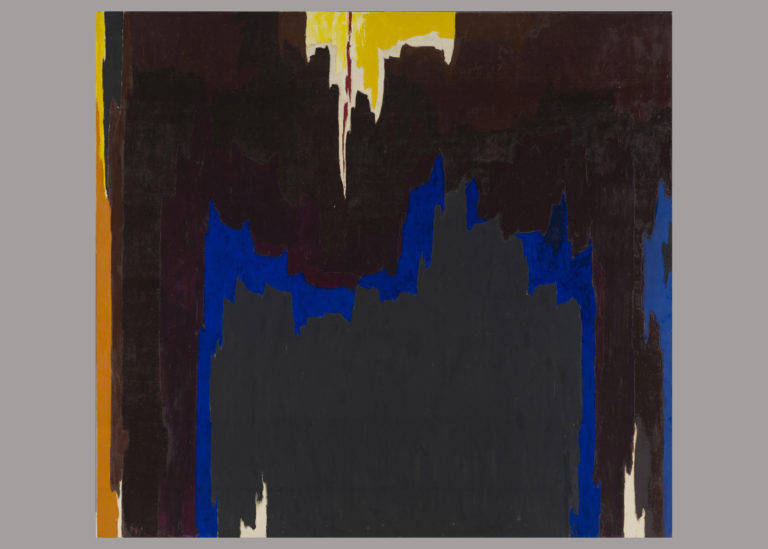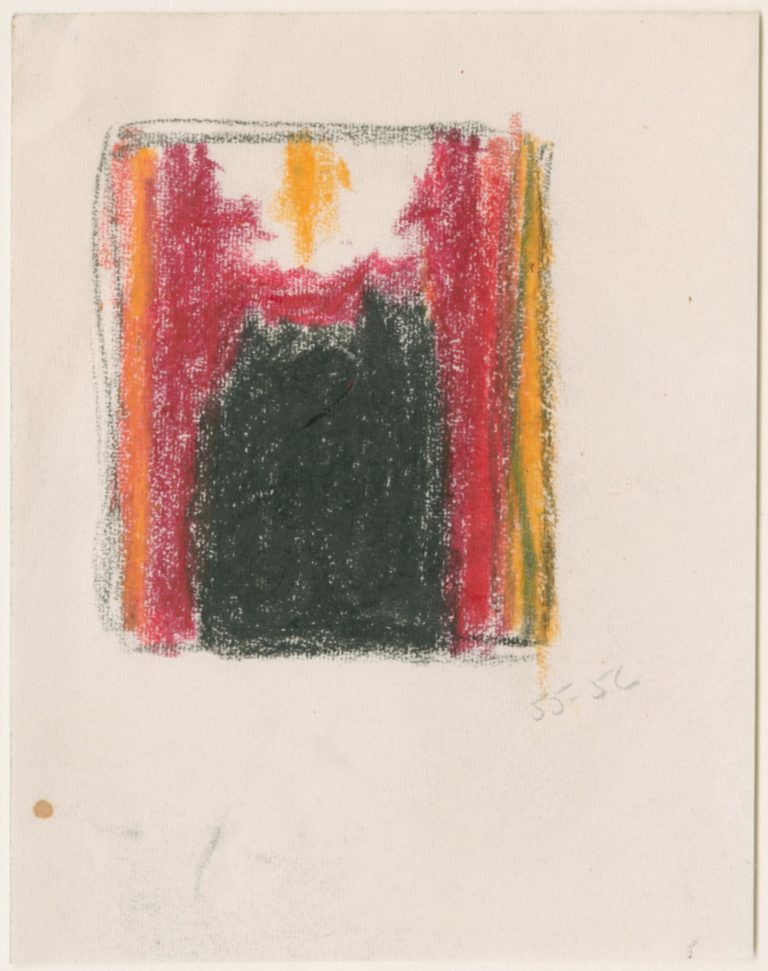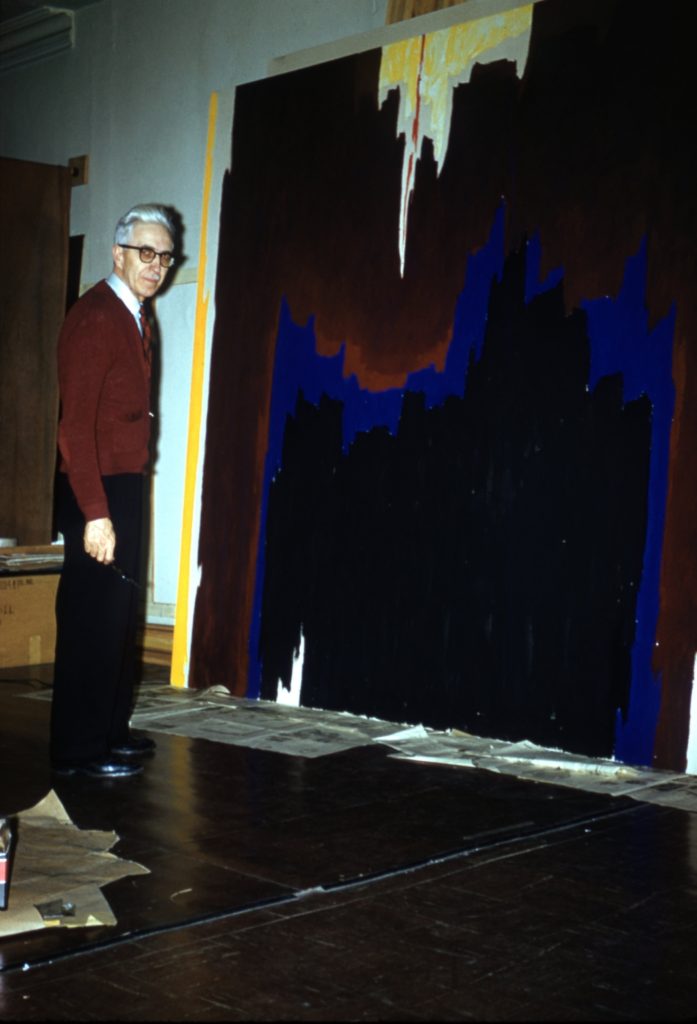In 2019, we’re taking you behind the scenes with staff interviews about their favorite artwork in the Museum’s collection. Our first interview features Bailey Harberg Placzek and her work of choice: PH-963. Placzek, associate curator and catalogue raisonné research and project manager, has been at CSM since the beginning. She started as a curatorial research intern in 2011.

Kristin Kirsch Feldkamp: Tell us a little bit about what you do at the Clyfford Still Museum.
Bailey Harberg Placzek: I split my time between exhibition creation, prep, installation, and—in preparation for the catalogue raisonné project that we just kicked off—artwork research, which also includes works by Clyfford Still that aren’t in Denver’s collection.
KF: We’re curious about your favorite Clyfford Still painting. Can you share something about it with us?
BP: I have a few, but the one that immediately pops into my head is PH-963 from 1957. The colors really speak to me. I’m drawn to the contrast of the iridescent blue with maroons and purples and earth tones. The more you look at it, the more the depth and space seem to push and pull in and out—so it appears to simultaneously be both two-dimensional and three-dimensional. I have a background in fine arts and when I start to think about making this painting, I really can’t wrap my head around how he did it: the layering, the textures, what he put down first versus what he put down second. It just shows such a mastery of the media that blows me away. And that yellow always just feels so visceral; like a dagger to my stomach. How does an artist create something that makes someone feel like that?
KF: That one has been up a lot.
BP: Yes. We show it a lot. There’s also a replica of it—PH-222 (1955–56). They’re not exactly alike but they are definitely informed by one another. PH-222 is at the Menil in Houston, and it was made before PH-963. We also came across an archival sketch [of PH-222]; we’re not sure if that was a preliminary sketch or just an inventory sketch after the fact, but it’s still interesting evidence of his process.

KF: What else makes PH-963 stand out for you?
BP: It has a different feel to me than a lot of his others. It’s contemplative. I can’t help but think of it as a dark, wet cave that you could just climb into. It’s more silent than a lot of his other works from this time, which to me seem so much more energetic.
KF: I see how it could exemplify a drawing inward, a closing in instead of an expanding out. Is there anything else you’d like to share about this painting?
BP: I always think it’s revealing to check if an artwork was in his Met 1979 retrospective because he curated that show a year before he passed away. It was, to him, this huge, final statement to the world about his life and career. Each selection represented something he wanted to tell or show the viewer. This painting was in that show.

